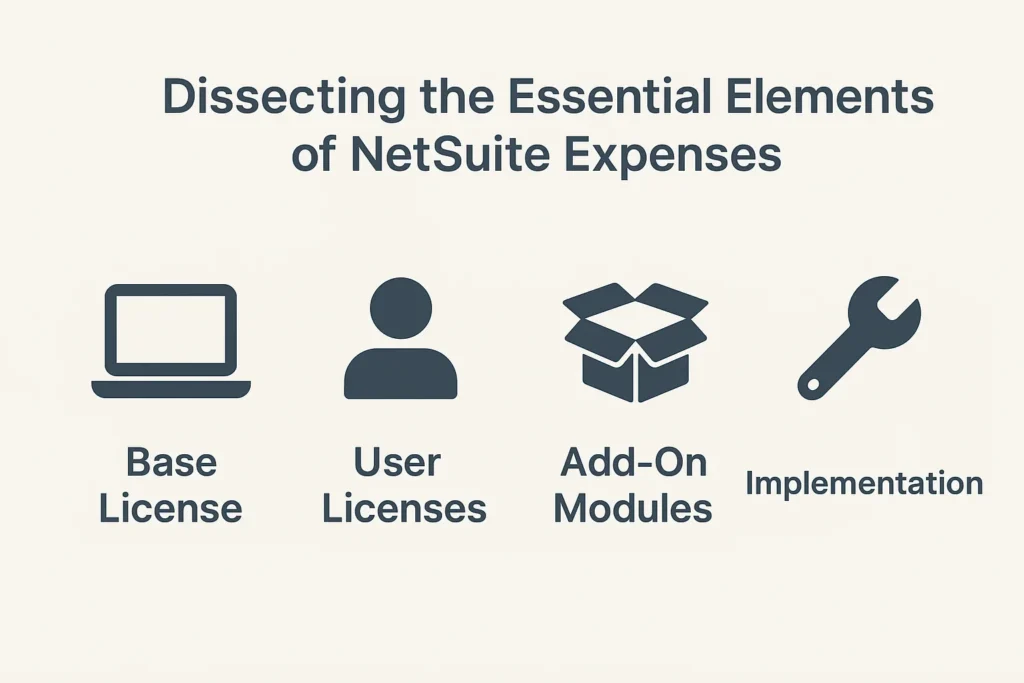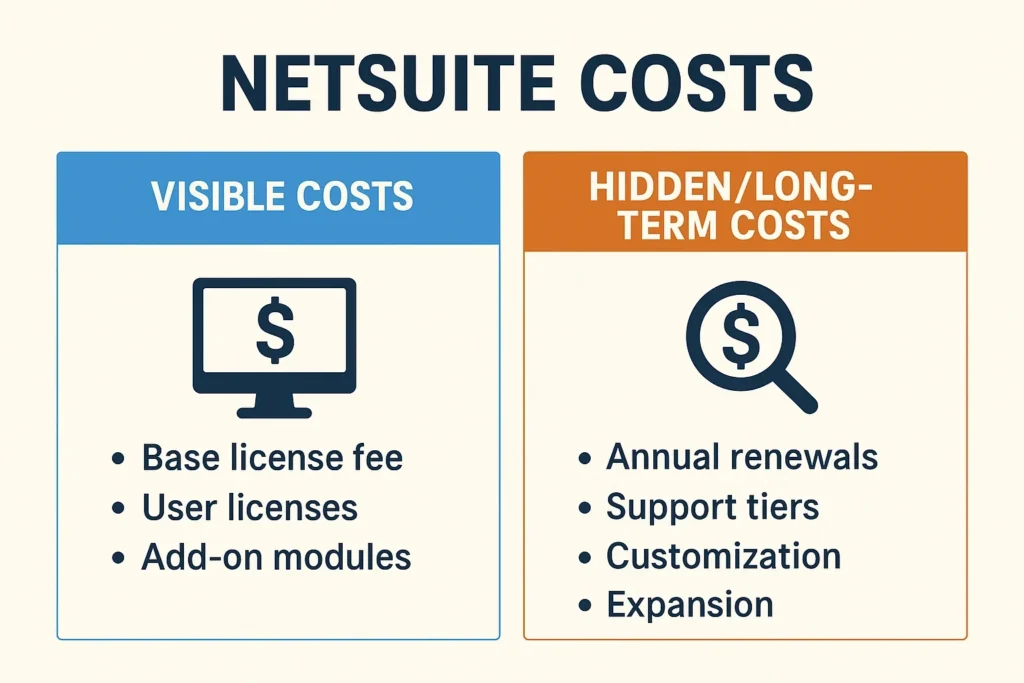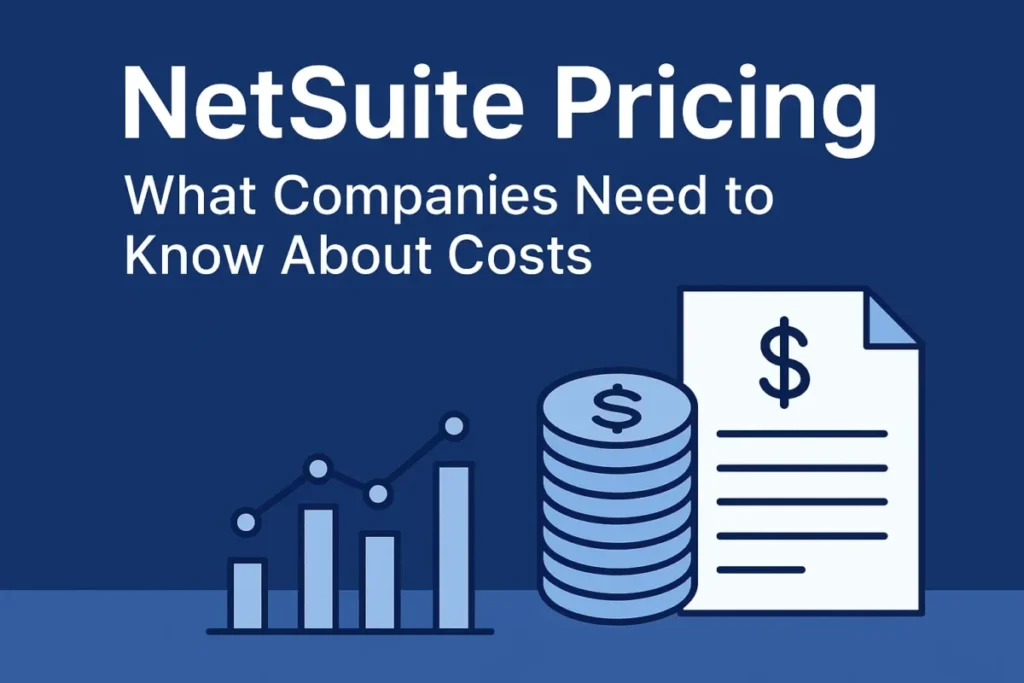Disclaimer: The information provided in this article is for general informational purposes only and does not constitute financial, legal, or professional advice. NetSuite pricing and implementation costs can vary widely based on individual business requirements, contract terms, and other factors. Companies should consult with authorized NetSuite representatives or certified consultants to obtain accurate, tailored cost estimates before making any purchasing decisions.
ERP (enterprise resource planning) systems are now essential for companies trying to scale efficiently, manage costs, and streamline operations. Oracle NetSuite is frequently mentioned as a top option among the most popular cloud ERP platforms. However, the question of what really goes into NetSuite costs keeps coming up.
The cost of NetSuite varies, unlike off-the-shelf software. Rather, it represents a confluence of long-term operational requirements, customization, and licensing. Businesses can improve their planning and steer clear of unpleasant surprises by decomposing these cost drivers.
Why NetSuite Pricing Is Complex
Because of NetSuite’s subscription-based, modular business model, every company essentially creates its own version of the platform. Costs depend on:
- The company’s size and workforce size
- Modules that are necessary include manufacturing, CRM, eCommerce, finance, and others.
- The operational complexity (multi-subsidiary, multi-currency, and compliance requirements)
- Integrations and modifications to other systems
Although it guarantees that businesses only pay for what they require, this degree of flexibility also means that pricing structures are not publicly standardized.
Dissecting the Essential Elements of NetSuite Expenses

To truly understand the investment, businesses should look at NetSuite costs in four main categories.
1. Base License Fee
A base platform license, which covers essential ERP functions like accounting, reporting, order processing, and inventory fundamentals, is included with every subscription. According to industry guidelines, the average monthly rate for an annual contract is $999.
2. User Licenses
Costs increase with the number of named users:
- Full users (finance managers, operations leaders, etc.) average $99–$149/month each.
- It is much less expensive for employees or self-service users (approvals, timesheets, and expense submissions).
Here, precise role mapping is crucial because estimating the number of full users too much can result in needless expense increases.
3. Add-On Modules
This is where costs can rise quickly. Modules extend NetSuite into areas like:
- Advanced financials (allocation of expenses, budgeting)
- Recognition of Revenue (in accordance with ASC 606/IFRS 15)
- Systems for managing warehouses (WMS)
- SuiteCommerce for eCommerce operations
Each add-on can range from a few hundred to several thousand dollars per month, depending on the functionality and scope.
4. Implementation & Setup Costs
Implementation often involves several key components, including data migration, customization of workflows and reports, integration with supply chain, HR, or CRM systems, as well as training and change management. According to estimates, the overall cost of implementation can vary significantly depending on complexity, typically ranging from $25,000 to more than $150,000.
Constant and Unexpected Expenses to Consider

Beyond the initial rollout, organizations must consider long-term factors:
- Annual renewals (usually increasing by 3–7% annually)
- Tiers of support (basic vs. premium response times)
- Maintenance of customization (workflows, integrations, and scripts need to be maintained)
- Cost scaling (adding new employees, divisions, or modules as the business expands)
The actual Total Cost of Ownership (TCO) may be distorted if these hidden costs are ignored. A wise budgeting strategy takes into consideration not just the first year but also the next three to five years of use.
Cost-Reduction Techniques
Despite NetSuite’s strength, companies shouldn’t go over budget. Typical cost-optimization techniques include:
- Phased rollouts: As needs change, add more modules after starting with the most important ones.
- Contract negotiations: Better prices can be obtained with multi-year agreements.
- Module bundling: Buying modules together frequently lowers the cost per module.
- Internal preparation: Billable consulting hours are decreased by pre-defining workflows and cleaning data.
These tactics enable companies to control expenses while optimizing NetSuite’s value.
The Significance of Transparency
The fundamental issue of what exactly goes into NetSuite expenses is one of comprehension and visibility. Businesses require more than just a figure; they require a comprehensive understanding of how every cost element, from licenses to implementation and ongoing support, fits into their operations. Real clarity entails understanding not just the initial cost but also the possible ROI and the ways in which the system can produce quantifiable value over time.
Conclusion: Choosing Wisely and Knowledgeably Regarding NetSuite Expenses
With its scalability, flexibility, and strong functionality, NetSuite has the potential to revolutionize business operations. But knowing the whole financial picture from licensing to implementation and long-term ownership is essential for success.
Organizations can make sure they are investing in a platform that generates quantifiable growth in addition to software by approaching NetSuite with reasonable expectations and thorough planning.












